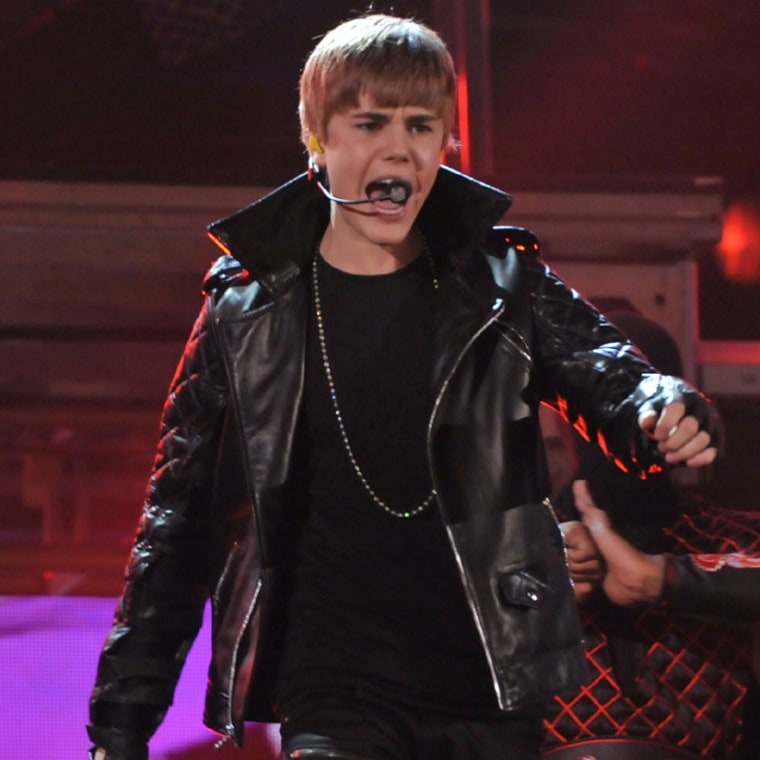Justin Bieber, Usher and others have unique sounding voices, in part, because their relatives over the ages lived within large social groups, suggests a new study.
The study, published in the latest issue of Current Biology, is among the first to empirically demonstrate that the size of an animal's social group helps to determine the uniqueness of that individual's voice. The results could also explain why everyone looks, sounds, and even smells so different.
"Group size definitely matters here," co-author Kimberly Pollard told Discovery News. "The bigger the crowd, the more it takes to stand out."
"Imagine if you hung out with the same three people every day," added Pollard, a researcher in the Department of Ecology and Evolutionary Biology at the University of California, Los Angeles. "You certainly wouldn't need to dress like Lady Gaga to be recognized, but in a group of 50, 100, or more, it sure could help."
For the study, Pollard and colleague Daniel Blumstein examined eight different species of rodents that live in social groups of different sizes and complexities. The rodents included California ground squirrels, Olympic marmots, yellow-bellied marmots, black-tailed prairie dogs, white-tailed prairie dogs, thirteen-lined ground squirrels, Belding's ground squirrels, and Richardson's ground squirrels.
The researchers caught individuals from each of these groups in a live trap. Since the rodents are afraid of humans, they often emit vocal alarm calls whenever a person approaches. The researchers recorded these calls and compared them to the alarm vocalizations of other members in that rodent's particular social group. Pollard explained that the social groups could include both relatives and members that aren't so closely related.
Social group complexity did not predict the uniqueness of each voice, but the size of the groups did. The larger the social group, the more distinctive the voices were.
"Differences in rodent voices are much like differences in human voices," explained Pollard. "Some animals' voices are high-pitched, others are low. Some voices are clear, others are more scratchy. Individual animals also have different timbre and use different patterns of emphasis. Each call has an animal's unique vocal stamp on it."
The researchers believe the findings likely apply to all social animals where recognizing individuals is critical. These include social rodents, dolphins, whales, elephants, horses, social carnivores (such as wolves and hyenas), and primates — including humans.
"You can think of it as a Where's Waldo problem," Pollard said. "Finding any particular individual in a crowd is tough, and the bigger the crowd, the tougher it is. There are more distracters to sift through, and if individual uniqueness is low, that means more doppelgangers, more cases of mistaken identity."
The solution, she believes, is to make each individual more unique.
"It's the equivalent of giving everyone a crazy sweater with a different colorful pattern on it," she said.
The clothing analogy might not be too far off, since the human population boom, combined with ever more crowded conditions, is likely increasing evolutionary pressure on our own individuality. Distinctive clothing, piercings, tattoos and other unique identifiers are perhaps an effort to literally stand out from the crowd.
"I expect humans are filling the gap by deliberately increasing our individuality in other avenues," Pollard said.
Michael Beecher, a professor of psychology and biology at the University of Washington, developed the hypothesis in the 1980's that social group size predicts individual differences. He told Discovery News that this new paper "is the first really complete test of the hypothesis with a large number of closely-related species."
"People often assume that our ability to recognize individuals is simply a consequence of natural biological variability in detectable physical traits found in any population of individuals in any species," Beecher said. "If this were true, it should be equally easy to distinguish among individuals of any species, so long as you have the requisite perceptual abilities of that species."
According to the researchers, however, larger social groups make it more difficult to identify members, prompting the evolutionary drive for individual uniqueness.
